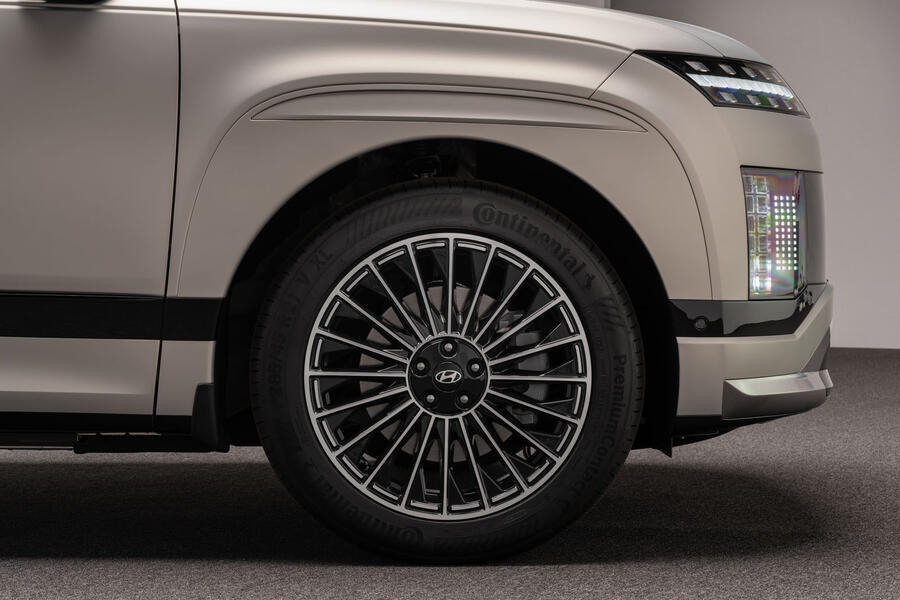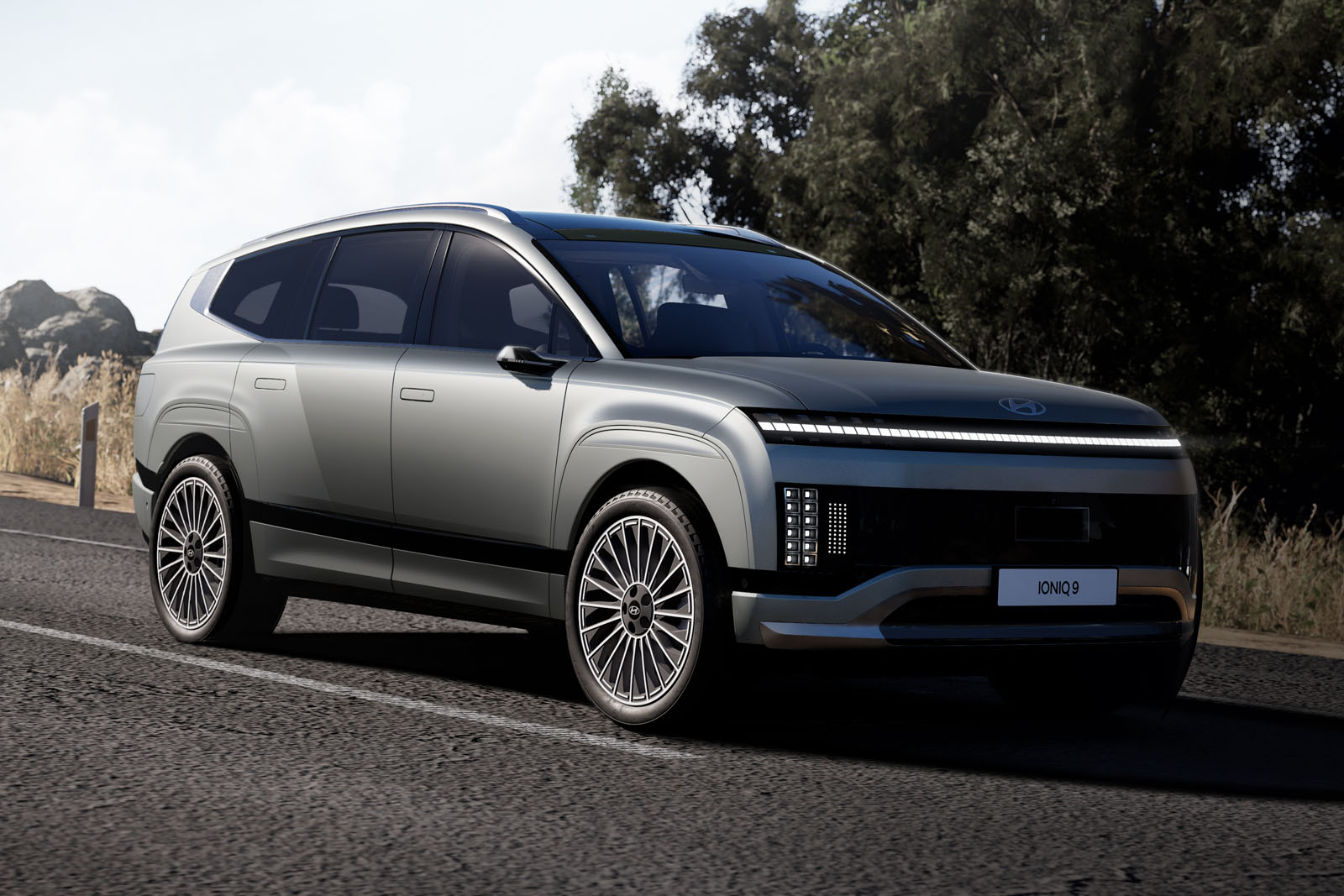Loasby even went so far as to suggest there is potential for the Ioniq 9 to make a dent in the full-bore luxury segment. When asked if he expects even Range Rover owners to be tempted into making the switch, he said: “Absolutely. I could see a big band of people being tempted, and I can see a band of people saying absolutely not, as well. That’s okay.”
Full UK specifications remain to be disclosed, but the entry-level car is tipped to start in the low-£60,000s with the top-spec Performance model nudging £75,000 – comfortably outpricing the Santa Fe to make it the most expensive Hyundai yet.
Hyundai Ioniq 9 powertrains

The Ioniq 9 will be available from launch with three choices of powertrain. The 215bhp, rear-driven Long-Range car is the most efficient and claims the headline 385-mile projected maximum range figure, while the 308bhp dual-motor car returns 320 miles per charge and the top-rung AWD Performance model, with 429bhp, manages 311 miles. They get from 0-62mph in 9.4, 6.7 and 5.2sec respectively, and top out at 124mph.
As with Ioniqs 5 and 6, the large new SUV is in line for a hot N variant.
Each variant is equipped with an 800V, 110.3kWh (usable capacity) battery, which is the largest fitted to any EV on sale in the UK, edging those of even the Mercedes-Benz EQS and Rolls-Royce Spectre. It’s rated to charge at speeds of up to 350kW, though as with other E-GMP-based EVs currently on sale, Hyundai suggests the real-world maximum will be closer to 220-230kW.
The battery can also be used to charge external devices with the 230V vehicle-to-load function, and Hyundai has made some subtle improvements to “address common EV customer concerns”, such as improving the consistency of the battery’s performance, providing more detailed energy usage information and enhancing the inbuilt EV route planner.
Other important upgrades for the Ioniq 9 are the introduction of a higher gear ratio at the rear for increased torque at lower speeds, and a two-stage power inverter that is said to improve efficiency.

